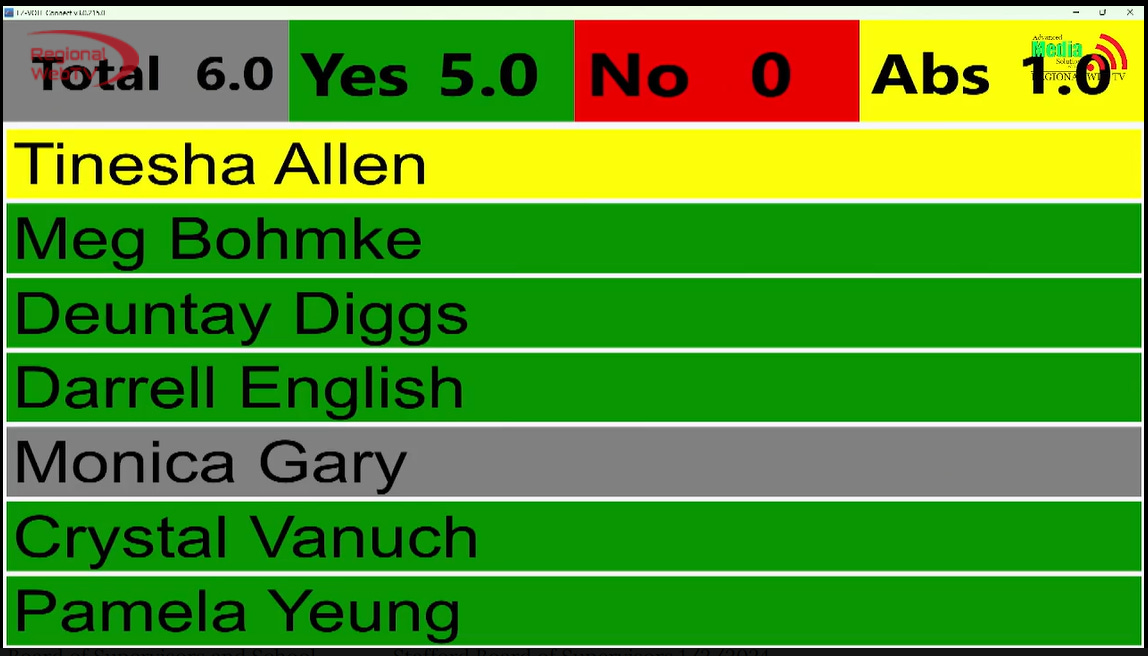
It’s a reference guide showing the impact of development on public schools and other infrastructure, used to negotiate voluntary proffers for new development.
by Adele Uphaus
MANAGING EDITOR AND CORRESPONDENT
City Council on February 13 adopted an updated capital impact study that it will use as a reference for negotiating cash proffers with developers.
A capital impact study prepared by consultants TischlerBise was adopted by Council in 2022, but as the City’s Planning Department has worked on two large recent development projects—Gateway (which is still in the works) and Neon (which Council approved in December)—it became evident that the core assumptions baked into the study need updating, senior planner Mike Craig told Council at its regular meeting last week.
The proffer system is unique to Virginia, Craig said. While localities in other states can charge impact fees on developers to cover the cost of providing services—roads, schools, public safety—to new residents of the development, Virginia does not grant this authority.
Instead, it permits localities to accept voluntary proffers from developers who are requesting a rezoning.
A capital impact study, Craig said, is “a reference guide, not a regulatory ordinance.”
“It’s something we use to say, ‘Hey, you’re building 700 units, and this is the anticipated impact.’ That’s all we’re saying,” he explained. “Ideally, the applicant sees there is a need and makes an attempt at mitigating that (through proffering land or cash). It’s informal and voluntary.”
The 2022 study looked at the impact of various types of residential and non-residential development on public schools and fire station capacity and it was based on several assumptions that are no longer applicable, Craig said.
One was that the study generated a capital impact cost per high school student of $73,833, because it included the estimated cost of building a new high school. A need for expanded high school space “was identified,” Craig said, but the project was not adopted into the city’s capital improvement plan.
“So developers were saying, ‘You don’t have a high school plan adopted, so we are not going to proffer anything for that,’” Craig said.
A project expanding James Monroe High School, at a cost of $5.8 million, was added to the ten-year capital improvement plan adopted for fiscal year 2024, so that cost has been reflected in the new capital impact study, Craig said.
Also, because the City School division had indicated plans to use grants, rather than the City’s general fund, to renovate the existing Walker-Grant Middle School into a third elementary school, the cost of that project was not considered in estimating the capital impact of an elementary school student.
However, the City School division is so small that “if you provide additional capacity in any building, it increases capacity in all buildings,” Craig said.
This was confirmed by TischerBise and incorporated into the new capital impact study so that the cost of both an elementary school student and a middle school student are the same, because both reflect the cost of the new middle school currently under construction.
The updated capital impact per elementary and middle school student is $68,257 and per high school student is $29,150.
The Neon development increased the amount of its voluntary cash proffers from $2.4 million to $3.2 million as a result of discussions about the updated capital impact study.
The Planning Commission reviewed the updated study last month and recommended that Council adopt it. The Commission also recommended that the study should consider the capital impact of a housing unit by bedroom count, rather than by average impact.
This is to avoid incentivizing developers to build larger houses. The average capital impact on schools of a detached single-family house is $11,000, according to the study, but that number hides a range between $5,804 from a detached house with zero-to-two bedrooms and $16,503 from a detached house with five or more bedrooms.
Council members agreed to adopt the updated report with the Commission’s recommendation.
“I’m afraid that by showing an average impact, we’re signaling to developers that we would be willing to accept that number right off the bat and negotiations would start there, instead of at what we call the maximum capital impact,” Ward 2 representative Jon Gerlach said.
Council members also agreed that the capital impacts study should be reviewed on an annual basis to ensure that it reflects “what’s happening on the ground.”





